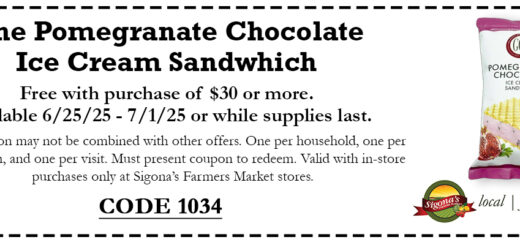Products for Healthy Living: Salt of the earth. And the sea.
Salt of the earth. And the sea.
Diane Rezendes, food writer
We are pleased to announce the arrival of three new finishing salts, thanks to our own John Nava’s tireless search to bring you the very best. He’s selected
- Appalachian sea salt from West Virginia, this week’s giveaway item;
- Murray River pink flake salt of Australia, rich in minerals; and
- Saltverk Icelandic salt, produced with 100% geothermal energy for a zero-carbon footprint.
Not all that long ago, most of us cooked with salt from the grocery aisle. The more daring among us might have both iodized table salt and kosher salt as pantry staples. Now a near-dizzying array of choices – from lava to alderwood-smoked to Alaskan blueberry (yes!) – can overwhelm the uninitiated. In this short Q&A, we hope to answer the basics, so you can enjoy these marvelous finishing salts.
Q: What’s the difference among salts?
A: Here’s a primer on the three basic types of culinary salt:
- Table salt – with or without iodine added, fine crystals. Often includes an anti-clumping agent.
- Kosher salt – a very fine crystal (often flat) that dissolves readily, making it ideal for pickling or brining.
- Finishing salt – usually from mountain (Himalayan, Appalachian) or sea (Celtic, French, Azorean). “Mountain” is a bit of a misnomer: all these salts originated in the sea at one point, even if it was eons ago.
Q: What’s a finishing salt and how do I use it?
A: Finishing salt is sprinkled over food after most of the preparation is complete. It’s typically less processed than table salt; each salt possesses a flavor profile unique to its place of origin. More on that in a minute.
Think of your cooking salt the way you think of your cooking wine: use your everyday staple for cooking and save the very best for tasting.
Q: How do I know the difference among the different finishing salts?
- A salt’s flavor profile is created by additional minerals that form as the salt crystallizes. Their combination and proportion also matters. For example, the minerals in the Irish Sea are different than those where the Himalayas now stand, and so is the flavor profile of each salt – and that is where subtle differences in flavor will emerge.
A good way to think of it is this: it’s a lot like our Fresh Press Extra Virgin Olive oils. We are happy to describe the qualities of each and offer our recommendations. But in the end, it comes down to your own personal preference. Try a variety of salts and see which you enjoy most.
Q: Can you suggest how to try them?
A: Here are some easy ideas to get you started.
- Sprinkle some briny sea salt like Appalachian sea salt over a fresh fillet of our line-caught wild salmon. (The salt is free as a thanks for your $30 or more purchase.)
- Try Saltverk flake salt with our peak-of-season tomatoes (and later when the weather cools, it’s perfect for a roast lamb with rosemary).
- The Murray River salt adds a delightful contrast to sweet caramels or dark chocolate.
- Or, if you’re a chocoholic, try these finger lickin’ good Dark Chocolate Coconut Haystacks.
Sigona’s features short Q&A profiles of our peak-of-season produce, specials, and selected grocery items throughout the year. Is there some item you’d like to know more about? Let us know at share@sigonas.com











